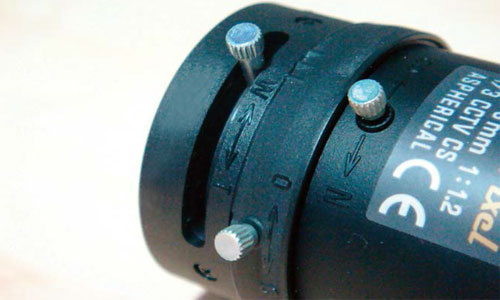Megapixel lens quality is inextricably linked to the longevity and performance of the lenses. Current lenses are mainly made from metal and high-quality plastic, which impact the lens’ lifespan and resulting image quality.
How Lens Materials Affect Applications
Megapixel lens quality is inextricably linked to the longevity and performance of the lenses. Current lenses are mainly made from metal and high-quality plastic, which impact the lens' lifespan and resulting image quality. The camera housing determines how durable the lens will be, while the peripherals affect the lens installation and fluidity of movement. Gear material also affects the product's lifespan.
Lenses made from metal materials are typically seen in low-end offerings from smaller producers. This is because makers can save on expensive lens molds. Each lens is individually ground, resulting in uneven quality that affects future installation in a camera. In contrast, lenses made from high-quality plastic are formed in molds. This results in lightweight lenses with improved optics and extends their lifespan, while lowering material cost. The majority of surveillance megapixel lenses are made from specialized plastic.

Manufacturing and Production
Lens production is a concern for physical security applications. To select the right lens, it is also important to understand how they are made and just how well-suited they might be for different needs. “All the key features of a megapixel lens like sharpness, clarity, aperture, depth of field, etc., are affected by both optical design and manufacturing,” said Vinson Jiang, Sales Manager at Leading Optics. “In the manufacturing aspect, compared with a standard-resolution lens, a megapixel lens has much higher demands in accuracy for each component, and is more critical on tolerance control during the assembly process since high-resolution lenses are more sensitive when aligning the optical axis. Any uneven image between the center and the corners will be very obvious, thus, unacceptable.”
Different manufacturers also adopt their individual procedures and process for testing and quality assurance of their products. “Hikvision adopts automatic facility for lens manufacturing to ensure that all of the lenses are manufactured with same specifications. For lenses that are 5-megapixel resolution and higher, Hikvision utilizes single group control, which is an auto-aligning process to ensure lens quality.
With projection test, modulation transfer function (MTF) test, and other more relevant tests, the uniformity of image resolution at lens center and edges is ensured for overall image quality,” stated Wei Wang, Optical Design Department Manager at Hikvision Digital Technology.
resolution at lens center and edges is ensured for overall image quality,” stated Wei Wang, Optical Design Department Manager at Hikvision Digital Technology.
“The uniformity of image resolution both at the lens center or at edges are equally important to ensure overall image quality. The performance of MTF at low frequency as well as at high frequency should be balanced, since high frequency impacts the image resolution, while low frequency has an effect on image clarity and contrast,” Wang supplemented. “The size of the aperture also plays an important role when clear images at low-light conditions are needed. The high reliability of a lens under different environment ensures stable performance though scenes vary. A lens can easily meet any single one of these mentioned factors above, but not all of them.
To achieve a high-quality megapixel lens, all factors including design, machine precision, measuring technique, assembly technology, and quality control should be considered.” Nowadays, many users believe that the design of the lenses is the most important part. This is, however, slightly misleading. “While good design is not everything, we should also rely on manufacturing. To guarantee the quality and performance of the megapixel lenses during manufacturing, we should firstly make sure each component is right and in the tolerance demand. To ensure a high-precision component, especially the glass element, we should have advanced machines to achieve such quality level. In terms of assembly, the alignment of the optical axis is quite a challenge, especially since the optical system consists of many elements,” explained Jiang.
Final Considerations
There is relatively little test equipment for lenses, making it hard to objectively evaluate performance. Lens providers are able to grind lenses with eye-popping megapixel counts for bragging rights, but real-world surveillance technology can only support up to 8-megapixel lenses. Displays max out at 4K (or four times 1,080p), making lenses with higher megapixel counts pointless.
Therefore, selecting the right lens means considering the material quality. Choosing a well-established brand will also ensure good image quality.